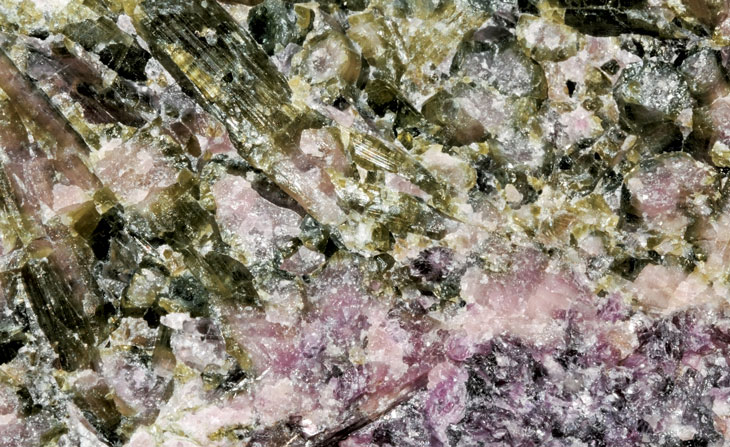Application of lithium minerals in the production of high-grade glass and ceramics

With the advent of new energy vehicles, lithium batteries have become the focus of attention and the subject of scientific research. Lithium-containing minerals not only have great potential in the field of new energy, but also have important functions and play a special role in the high-grade glass industry. Both spodumene and petalite are lithium-containing minerals and are raw materials for extracting lithium. The two are often produced in granite pegmatites and become paragenetic minerals. Because of its special physical and chemical properties, it is widely used in the production of high-grade glass and ceramics.
1. Glassware
In the production of glassware, although lithium oxide is not an important part of the glass composition, it has excellent melting ability, which can reduce the melting temperature, prolong the service life of the furnace, improve the melting efficiency, and thus improve product quality. Adding spodumene concentrate can be used to produce high-grade glassware for packaging of cosmetics. Low-grade glass-grade spodumene has also been gradually accepted by the market.
2. Tableware
In the production of containers, the Fe2O3 content of tableware is significantly lower than that of similar products. The use of spodumene with high lithium oxide content and low iron content can ensure that the product meets the specified color requirements. In addition, high-quality spodumene can not only lower the melting point, but also reduce the viscosity of the melt. Therefore, the formability is good, and the production efficiency will be significantly improved.
3. Fiberglass
The use of lithium oxide in glass fiber production can not only reduce the damage of fluorine to the environment, but also have the same effect as in the production of glassware, such as lowering the melting point and improving the melting effect, thereby improving production quality. The viscosity of the melt is low, easy to operate, low working temperature and long service life of the equipment.
4. TV display screen
Lithium oxide extracted from spodumene concentrate or petalite is the main component of monochrome televisions. The combination of lithium oxide and barium reduces the radiation transmitted through the panel, improving the molding characteristics and surface finish of the display. In the application of color TV, since the use of lead is gradually banned, it is replaced by lithium oxide. Zirconia and barium are increasingly used in formulations, while lithium oxide is used as a flux.
5. High temperature ceramic products
In the established ceramic industry, lithium is an important part of the formulation. Spodumene as a low expansion rate filler contributes to the formation of the low expansion rate lithium aluminosilicate phase. Add a large amount of spodumene, and choose an appropriate calcination temperature, the following reactions occur:
Li2O.Al2O3.aSiO2+SiO2= Li2O.Al2O3.8SiO2
(spodumene) + (silicon oxide) = (β-spodumene solid solution)
Free silica is assimilated in β-spodumene solid solution, exhibiting almost negligible thermal expansion. Therefore, the product has thermal shock resistance.
6. Glaze
Lithium oxide can be used to reduce the viscosity of the melt and improve the fluidity of the coating. It can also reduce firing time and firing temperature.
7. Fully vitrified ceramics
Spodumene plus feldspar flux can reduce the firing temperature of general sanitary ware by 30-40°C. The Italians added spodumene to the ultra-white ceramic body to reduce the shrinkage effect and thus improve production efficiency. The low porosity green body with spodumene added ensures minimum dust absorption while increasing combustion efficiency.
With the wide application of lithium oxide in ceramics, glass fiber, flat glass and color TV, etc., it has gradually expanded to the metallurgical industry. Lithium oxide can be used to change the viscosity of slag, improve metal recovery and reduce the possibility of slag in the metal.
